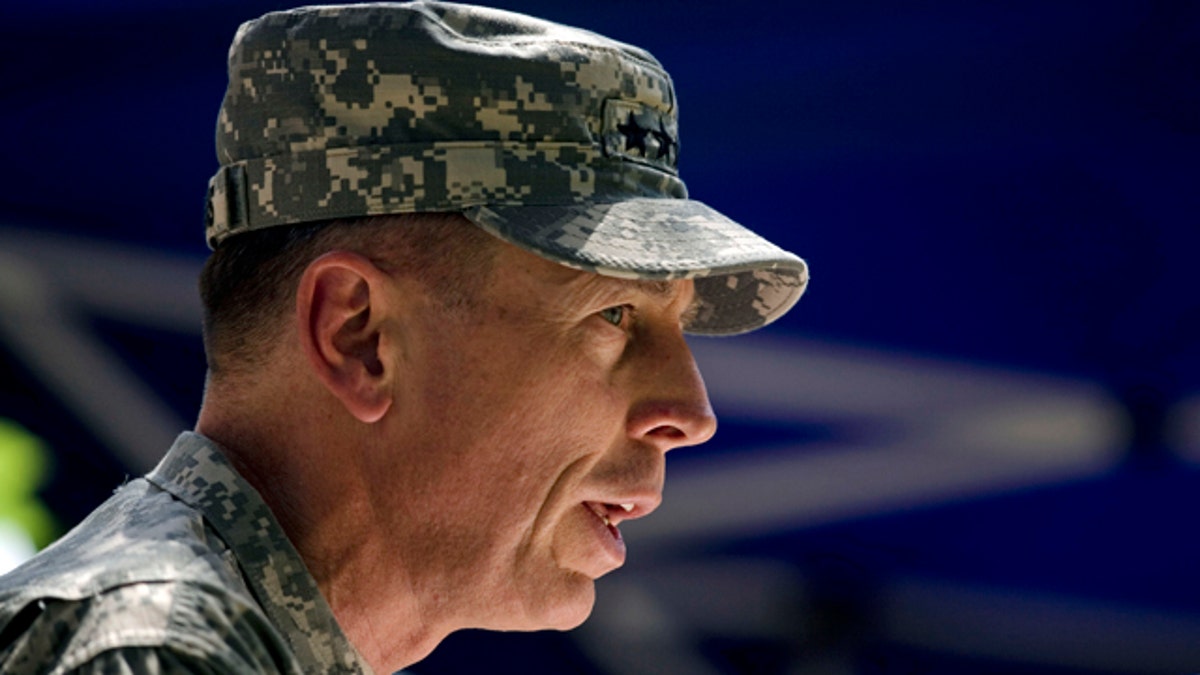
FILE: In this July 4, 2010, photo, Gen. David Petraeus speaks during a ceremony in which he formally assumed the command in Kabul, Afghanistan. (AP)
WASHINGTON — U.S. commanders in Afghanistan have eased a rule covering the use of force that has been a source of discontent among American troops, according to military officials.
As a result of findings during a review commissioned by Gen. David Petraeus, it has been made clear that troops are allowed to request airstrikes and artillery strikes against insurgents hiding in dilapidated buildings or other abandoned structures. Commanders conducting the review said they found some junior commanders had misinterpreted the rules to mean they weren't allowed to fire on such places.
The review comes as Gen. Petraeus, who in July took over as head of the allied force in Afghanistan, looks to improve the U.S.'s broader counterinsurgency strategy—aimed at protecting the population and shoring up support for the Afghan country's government—and demonstrate results on a tight timeline. Other reviews of the strategy are to take place at the end of this year, and defense officials are keen to find ways to demonstrate their progress ahead of that.
The clarification on the use of force is part of a broader effort by Gen. Petraeus to review the tactical directive limiting airstrikes and artillery strikes that was issued in July 2009 by Gen. Stanley McChrystal, who was recently dismissed as head of the allied force. That directive was a radical departure from the U.S. military's traditional doctrine of using overwhelming force to defeat its enemies.
Gen. Petraeus, who has spoken often about how civilian deaths undermine a counterinsurgency effort, is expected to largely keep in place limits on the use of airstrikes. Two senior military officials said Gen. Petraeus would largely keep intact Gen. McChrystal's previous guidance on the use of force—and will emphasize his support for Gen. McChrystal's efforts to limit civilian casualties.
Last week, Gen. Petraeus issued new counterinsurgency guidelines that largely continue the practices laid out by Gen. McChrystal. The guidance tells troops to position their outposts near population centers in order to better protect the population, to be careful that money paid out for projects or contracts doesn't go to the insurgency, and to confront corrupt officials.
Gen. McChrystal's guidelines on the use of force in Afghanistan have been controversial.
Many Defense Department officials say the rules have succeeded in limiting civilian casualties and have helped improve the Afghan government and population's view of the allied military effort. Military service members, by contrast, often complain the rules are too restrictive and have at times put troops in danger. Some current and former military officials say the limits on airstrikes have stripped the U.S. of its greatest technological advantage over the Taliban.
